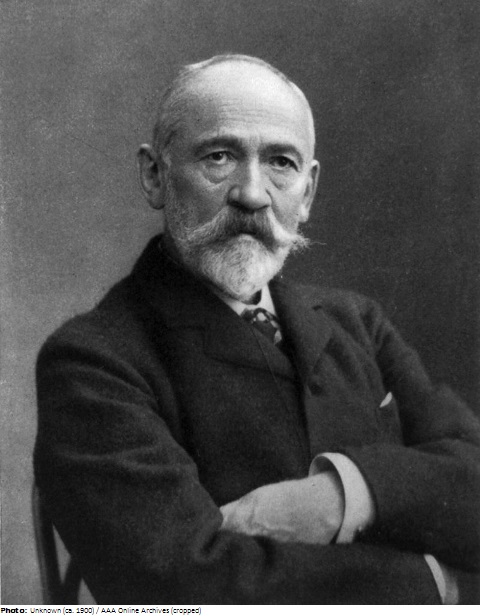John Quincy Ward

Biographical information
| Roles | Competed in Olympic Games |
|---|---|
| Sex | Male |
| Full name | John Quincy Adams•Ward |
| Used name | John Quincy•Ward |
| Born | 29 June 1830 in Urbana, Ohio (USA) |
| Died | 1 May 1910 in New York, New York (USA) |
| NOC |  United States United States |
Biography
John Quincy Ward became best-known for his larger than life statue of George Washington, which was erected in front of Federal Hall on Wall Street. He first studied medicine and then sculpture in Washington and then became known for over-life sized sculptures of known public figures. From early childhood, Ward also displayed a fondness for modeling and making clay figures of animals. He also worked with bronze, plaster and marble. He was educated in Washington and settled in New York in 1861. He later became president of the National Academy of Design and the National Sculpture Society. He mainly produced larger-than-life sculptures of well-known public figures. His brother Edgar Melville Ward was also an artist.
John Quincy’s sculpture, Indian Hunter with his Dog, was submitted posthumously to the 1928 Art Competitions in Amsterdam. In this sculpture, Ward successfully imparted directness and naturalism by relying on the tactile and expressive qualities of bronze. Early, smaller versions were already created in the 1850s. The statue, cast in 1866 and unveiled in 1869, was the first sculpture by an American artist to be erected in New York’s Central Park. Three other life-size specimens were made for Cooperstown and Buffalo, New York, as well as for his widow for his grave in Oak Dale, Urbana. Smaller casts (41 x 27 x 39 cm) were created before 1910 and show some differences.
Results
| Games | Discipline (Sport) / Event | NOC / Team | Pos | Medal | As | |
|---|---|---|---|---|---|---|
| 1928 Summer Olympics | Art Competitions |  USA USA |
John Quincy Ward | |||
| Sculpturing, Statues, Open (Olympic) |
Special Notes
- Listed in Olympians Who Competed Posthumously ()